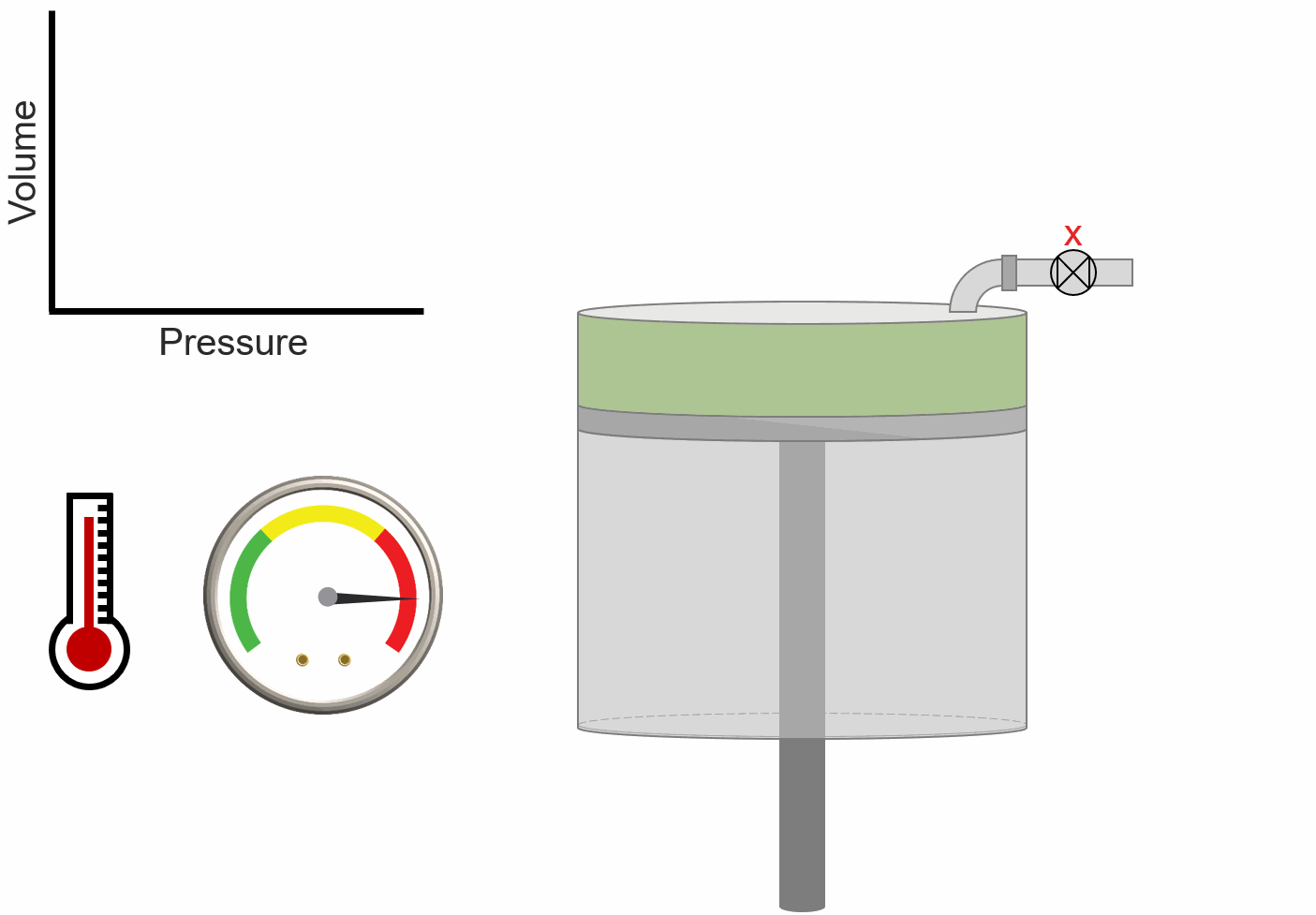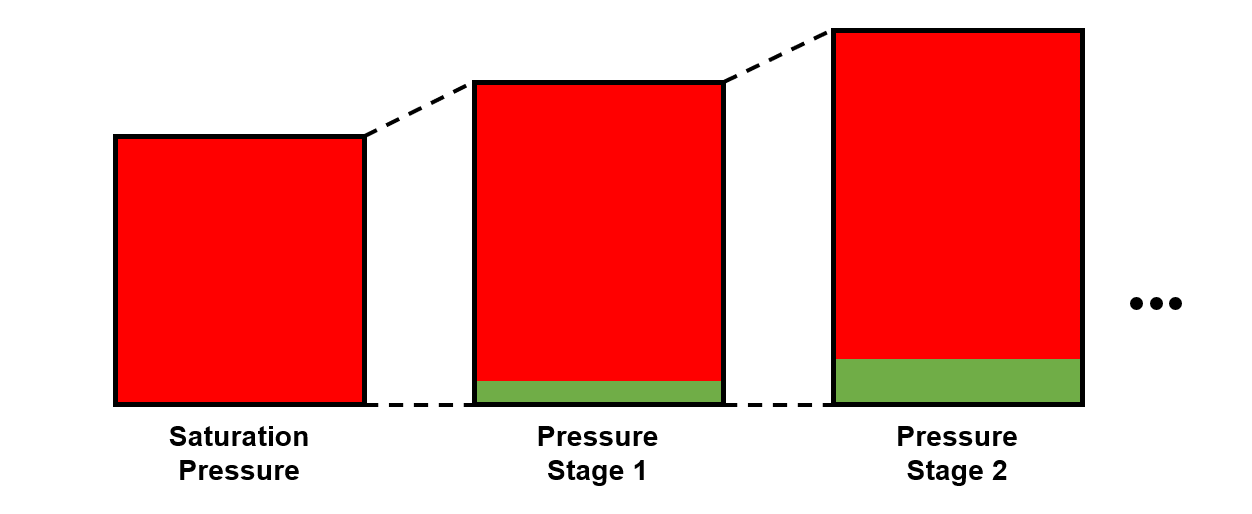Constant Composition Expansion
The constant composition expansion (CCE) or constant mass expansion (CME) experiment is one of the standard depletion experiments. The main outputs of a CCE test are an estimate of the saturation pressure and volume versus pressure. Traditional blind PVT-cells only provide the total cell volume versus pressure, while more modern visual PVT-cells also estimate the liquid and vapor volume amounts. These visual PVT-cells may also indicate the first visual sign of the incipient phase.
Procedure
The procedure for a CCE experiment is shown as an animation and as a schematic below. A PVT-cell is loaded with a fluid sample and pressurized to a pressure above the saturation pressure (this may be higher than the initial reservoir pressure if the fluid is initially undersaturated). The PVT-cell volume is then increased at a constant temperature, resulting in a decreased pressure. The pressure is recorded at the different PVT-cell volumes and is reported in the PVT report.

Animation 1: Animation of a CCE procedure for an undersaturated reservoir oil.

Figure 1: Schematic of a CCE experiment for a saturated reservoir gas.
Results
The two main results of the CCE experiment is the saturation pressure and the volume versus pressure data. Another result of the CCE are oil and gas volumes below the saturation pressure (if a visual PVT-cell is used) or potentially the single-phase density.
Quality Control / Quality Assurance
For gas samples, the Z-factor is estimated by the laboratories. Estimations of the Z-factor data can be performed as a quality assurance of the laboratory data. Additionally, a mass balance quality control can be performed for the single-phase pressure, if the relative total volume and density are given. The total mass in the CCE should remain constant, and using \(m = \rho \cdot V\), it is possible to estimate the variation in the predicted mass of the fluid. Large deviations indicate either inaccurate volumetric data or more likely inaccurate density data. A constant reduction in the mass amount as sometimes seen in hydrogen storage experiments is most likely due to leakage.